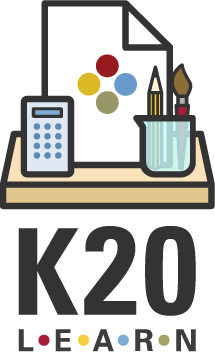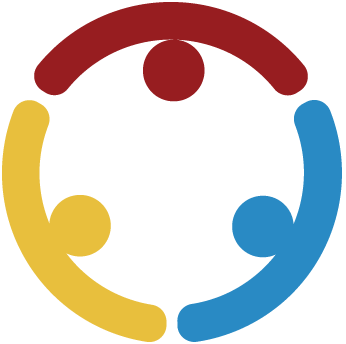Summary
Students will delve into the engineering design process by developing devices that convert energy from one form to another. First, they will assess their understanding of energy transfers using the "Always, Sometimes, or Never" strategy. Then, they generate a word cloud to explore their knowledge about what engineers do. After learning about the engineering process, students will deepen their comprehension by creating a user manual for their device and conclude with an exploration of the Engineering Design Process.
Essential Question(s)
What does an engineer do? What is the Engineering Design Process? How is the Engineering Process used to design a device that converts energy?
Snapshot
Engage
Students assess their understanding of energy transfers using the "Always, Sometimes, or Never" strategy. Then, using Mentimeter the class generates a word cloud to explore their knowledge about engineers.
Explore
Students create a device that converts energy from one form to another using simple materials and clear parameters.
Explain
Students are introduced to the Engineering Design Process and watch a video. Next, they compare designing and building their device to the engineering process and create individual anchor charts.
Extend
Students create an instruction manual for their energy devices. They will provide step-by-step instructions for their devices and explain how energy is transferred when operating them.
Evaluate
The class creates a second word cloud about engineers and compares it to their original word cloud. Students identify changes in their ideas based on what they have learned.
Materials
Lesson Slides (attached)
Airplane Landing Cards (attached)
Always, Sometimes or Never True? Cards (attached)
Always, Sometimes, or Never True? Answer Key (attached)
Engineering Design Process Diagram (attached)
Engineering Design Process Anchor Chart (attached)
Scenarios 1 and 2 (attached; optional)
Scenarios 3 and 4 (attached; optional)
Supplies for the devices
Tissue boxes
Paper towel tube
Pencils
Rubber bands
Tape and scissors
Engage
35 Minute(s)
Start the lesson by sharing the essential questions with your students using slide 3 of the attached Lesson Slides.
Next, explain the strategy Always, Sometimes, or Never True using slide 4. Then have students read the energy statement on slide 5, and determine if they think the statement is always, sometimes, or never true. Students then move to the designated area that agrees with their thinking and form small discussion groups. Have the class share a little from each group's thinking. Then, as a class, decide on the best answer and reasoning. Continue this process with the statements on the next four slides.
Slide 5 The total amount of energy in the world changes.
Slide 6 An energy transformation is the change of energy from one form to another.
Slide 7 Heat is a byproduct of energy changing from one form to another.
Slide 8 If you place a spoon in a pot of boiling water, the end of the spoon not touching the water gets very hot.
If you prefer, pass out a copy of the attached Always, Sometimes, or Never True? Cards to each student. Have students read through each of the four statements on the handout, and label them as "always true," "sometimes true," or "never true." Next to each statement, ask students to explain their reasoning for why they chose each label. After students have had time to work, go through each statement and invite students to share out which label they chose and why. Then, as a class decide on the best answer and reasoning.
After the discussion, tell the class that they will be creating devices that use energy transfer to work.
Display slide 9. Have students think about the question, What does an engineer do? Instead of using a whiteboard, use the word cloud feature of Mentimeter to create a word cloud. Input words for students as they share, or have students use their devices and go to menti.com, put in the custom code or scan the QR code you created, and type in their own responses. Use the "presentation" mode on Mentimeter to display the word cloud generated by their answers.
Explore
30 Minute(s)
Display slides 11-13 as students are introduced to the procedures for their experiment. As the class progresses through the slides, follow the procedure in class.
Procedure:
Ask students, “How can you convert energy from one form to another using simple materials?” on slide 11.
Make sure students know they can only use the materials provided and they must convert energy from one form to another.
Before the materials are passed out, provide students with 10-15 minutes to brainstorm and draw a picture of their device. Students can use AutoDraw to design their device and then upload it to their digital notebook or desktop. They should list the materials and the quantity needed and describe how their device will convert energy. (You may want to provide a timer for this activity. See slide 12.)
When students are ready, or when the timer finishes, provide students with the materials they need.
Allow students around 20-30 minutes to create and test their devices using the timer on slide 13. Any changes they make to their original design should be recorded on their design paper with a different colored pencil. This will help them track their changes.
Have students test their devices with you to check for functionality and energy conversions. This can be done at table groups or 1-1.
Students then make final revisions and using another color of pencil, record their changes on their design sheet and re-test for functionality and energy conversions.
In preparation for the class Gallery Walk, show slide 14 and have students display their design sheet and device. During the Gallery Walk students will view and discuss the design of their device and be able to explain how it converts energy to fellow classmates.
Explain
45 Minute(s)
Start this session by asking students to think about what they did during the designing and building of their device and show slide 15. Have students share their ideas with an Elbow Partner and then ask for a few volunteers to share with the class. To help facilitate the share-out, you may want to use the Airplane Landing Strategy and hand out the attached Airplane Landing Cards 1,2,3, to the first three hands that go up.
Next, show the class the chart depicting the engineering design process on slide 16. Ask the students to think about how engineers design things using this process and also how this process relates to how they worked on their devices.
During the class share-out, periodically stop to define and clarify the following vocabulary terms with the class on slide 17
Engineering Design Process - A series of steps that engineers use to find a solution to a problem.
Constraint - A limitation or restriction.
Criteria - Explicit goals that a project must achieve to be successful.
Show the students the video The Engineering Process: Crash Course on slide 18. Have students write a “Two-minute Paper” comparing what they did during their activity to the engineering process. Show the class the prompts on slide 19: What did they do that was the same or different? Did they do things in a different order, or skip a part? What about the researching, testing, or improving of components?
Display slide 20. Students will now connect the steps they used in building their devices to the components of the Engineering Design Process. To demonstrate this, students will create their own Anchor Charts that outline each step of the Engineering Design Process. On the chart, they should include examples from their device-building experience to explain each step. Students can choose to do this activity either in their Science Notebook or on a piece of paper.
Extend
35 Minute(s)
Display slide 21. Tell students that the next step is to create an instruction manual for their energy device that includes step-by-step instructions for how to use their device and an explanation of how energy is transferred when operating the device.
If needed, have your class review and create a list of transitional words, starting with the list on slide 22, that could help with their writing.
Possible Transitional Words:
First, second, third…
After, before, during….
Finally, later, next, soon, then….
Under, over, near, besides, above…
Furthermore, in addition, besides, in fact…
After the instruction manuals are complete, have students read them to a classmate and see if that student can operate their device using the instructions. Do the instructions include what energy is being transferred? How is it transferred when operating their device?
Evaluate
30 Minute(s)
Display slide 23. Using mentimeter, have students create a second word cloud by typing in words to respond to the question, What does an engineer do? Then, display the word clouds from the beginning of the lesson and this recent one. Have students compare the content. Students should notice a larger variety of tasks and skills performed by engineers.
2nd or Optional Assessment: Show slide 24 and give students the handout with the two scenarios. Have students choose the scenario that they think will work the best and then explain the reasons why the one they chose will work better than the other. (There are two different handouts attached: Scenarios 1 and 2 and Scenarios 3 and 4). You may give students both or vary among the students.
Differentiation Activities
Exploring Renewable Sources of Energy: Have students explore different types of renewable energy and the benefits and detriments these types of energy may offer. Students may also want to explore regions of the world to explore and identify the kinds of renewable energy that would be beneficial for that region and why they would work.
Resources
Crash Course Kids. (n.d.). The Engineering Process: Crash Course [Video]. YouTube. https://www.youtube.com/watch?v=fxJWin195kU
K20 Center. (n.d.). Airplane landing. https://learn.k20center.ou.edu/strategy/78
K20 Center. (n.d.). Always, sometimes, or never true. https://learn.k20center.ou.edu/strategy/145
K20 Center. (n.d.). Anchor charts. https://learn.k20center.ou.edu/strategy/58
K20 Center. (n.d.). Autodraw. https://learn.k20center.ou.edu/tech-tool/3472
K20 Center. (n.d.). Elbow partners. https://learn.k20center.ou.edu/strategy/116
K20 Center. (n.d.). Four corners. https://learn.k20center.ou.edu/strategy/138
K20 Center. (n.d.). Gallery walk https://learn.k20center.ou.edu/strategy/118
K20 Center. (n.d.). Mentimeter. https://learn.k20center.ou.edu/tech-tool/645
K20 Center. (n.d.). Two-minute paper. https://learn.k20center.ou.edu/strategy/152


